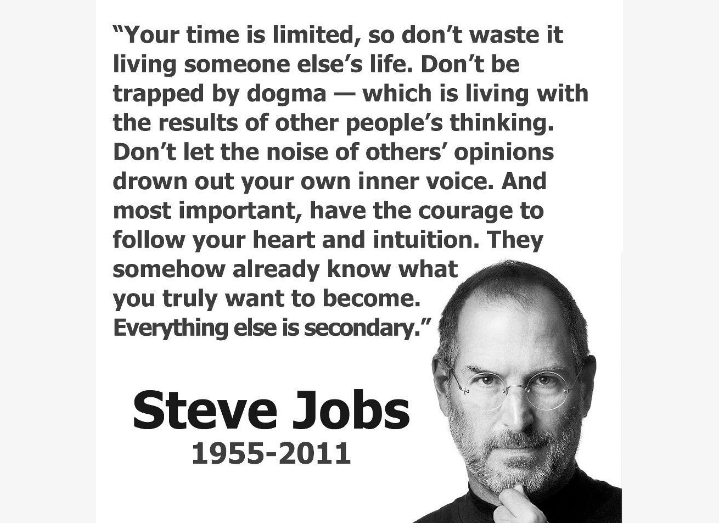How To Set Goals | Goal Setting Fundamentals
“A leader is one who knows the way, goes the way, and shows the way.”
— John C. Maxwell
⇒ Leaders Set Goals
Do you consider yourself a leader?
Sometimes we associate leaders with high-profile, powerful positions.
• The CEO of a Company.
• The Principal of a School.
• The President of the United States
And yes, these people are leaders. But you don’t have to be rich, famous, or powerful to be a leader. You just need to be a person who leads.
Leaders are needed in all areas of life — in families, amongst friends, on teams, in the workplace, and on campus.
They’re the ones that open doors for others to follow and set the standards by which we live.
Leaders can possess a variety of different characteristics and personality traits. They might be driven, intelligent, creative, hard-working, charismatic, or even domineering. But the similarity that one can find amongst almost every leader… THEY HAVE GOALS!
“You can practice shooting eight hours a day, but if your technique is wrong, then all you become is very good at shooting the wrong way. Get the fundamentals down and the level of everything you do will rise.”
—Michael Jordan
⇒ Fundamentals of Effective Goal Setting
In goal setting, technique is everything!
When I hear people explain that they are having trouble with accomplishing their goals, it is usually because they started off wrong from the beginning. They had bad goals. I don’t mean the things they wanted were bad. It’s just that they didn’t set their goals up for success.
A goal is more likely to be accomplished if it’s designed with these qualities in mind:
1. YOUR GOAL MUST BE POSITIVE
2. YOUR GOAL MUST BE SPECIFIC
3. YOUR GOAL MUST BE REACHABLE
4. YOUR GOAL MUST BE PERSONAL
If your goal doesn’t satisfy these four requirements, you might run into some trouble along the way. Over the next few posts, we’ll take a closer look at these characteristics that differentiate a good goal from a bad goal.
NEXT UP: How To Set Goals Quality #1: Make Your Goal Positive
Do you have any favorite goal-setting lessons, quotes, games, or activities that you use to teach goal-setting? Maybe you know a great tip to help eager goal-setters reach their goals faster? Leave your comments below!
I look forward to a great goal-setting discussion!
Leadership Game | Words of Wisdom Student Leadership Quote Game
Leadership Game | Words of Wisdom Student Leadership Quote Game
[divider height=”30″ line=”1″]
Description
Students walk around the room reading a series of posters, each which display a different quote highlighting a possible quality of a leader (quotes provided). Every student chooses a quote to stand by that illustrates the concept of leadership closest to their own beliefs. A discussion of leadership qualities proceeds from there.
Purpose
This is a great lead-in to discussing qualities of a leader with your students. The students begin by reading and thinking about leadership concepts and philosophies as spoken by some of our world’s greatest leaders. They continue with a discussion on the various qualities of leaders and identify their own leadership beliefs and styles.
Materials Required
- Scotch Tape
- 15-20 signs with leadership quotes – 20 Awesome Leadership Quotes PDF
- Optional but recommended: A whiteboard to right down leadership quality answers
Time to Play
30-45 minutes
[divider height=”30″ line=”1″]
INSTRUCTIONS
The set-up:
-
Print out 20 Awesome Leadership Quotes PDF .
- Depending on the size of your group, pick out 10-20 quotes that you would like to use for your game.
- Tape the quotes on the walls in no particular order. Several students may gather around certain quotes, so leave plenty of room between each poster.
The game:
- Ask the participants to leave their chairs and walk around the room reading each of the quotes.
- Instruct them to choose and stand by one quote that best relates to their own view on what makes a good leader.
- When everyone has selected a quote, have them discuss among others who chose the same quote why that quote is important to them. Note: the number of participants gathered around each quote will likely vary.
- Encourage the group to share their own leadership experiences that illustrate their quote.
- Each quote group will then select a member who will share the groups view and give examples.
- Have each group’s spokesperson explain to the rest of the room the reason behind their choice using some of the examples provided by the group. Talk about the importance of the identified leadership skill.
- Proceed moving from quote to quote allowing each group to answer and discuss their leadership beliefs as it relates to their quote.
[divider height=”30″ line=”1″]
DISCUSSION IDEAS
If possible, write your key ideas on the white board. These can launch further discussion questions or a lead-in to additional leadership content.
1. Ask the students to identify and discuss each of the core leadership concepts illustrated within each quote. Lead a discussion on which concepts are important to leadership. Encourage your student leaders to use specific and personal examples.
2. Discuss with your class the importance of each of these leadership qualities as they apply to student leadership and leading a campus. Ask “Are there some qualities more important than others?” “Why?”
3. Illustrate common or hypothetical challenges that your student leaders might face as they fulfill their role as a leader on campus. Have your students identify and discuss which leadership qualities might be useful to handle each situation.
4. Ask “What are the benefits of working as a leadership team as we proceed to lead our campus?” “Is a combination of student leaders and student council officers with different strengths more beneficial than one leader in complete control of the leadership vision?”
5. With your leadership qualities identified and written on the whiteboard, ask your group to call out the names of leaders both admired and hated that exhibit some of these leadership qualities and write them on the board. You will hear names of both popular leaders like Martin Luther King and Mahatma Gandhi as well as some leaders not so admired. Discuss how these leaders were effective leaders no matter if we agree with their leadership goals and direction. For example, Adolf Hitler may have been an evil man but he certainly had strong belief in his vision, his ability to move a nation, as well as other leadership qualities.
6. The 20 Leadership Quotes PDF includes the quote: “Leadership is something I was born with.” If you choose to use this quote in your game it can be a great lead-in to the sometimes controversial discussion whether leaders or born or made.
[divider height=”30″ line=”1″]
COMMENTS
- Ideas stick better when accompanied by a personal example. Your students will gain greater retention of your discussion points when they accompany their basic answers with an example or descriptive story, hypothetical or real, that involves how they have or will use their leadership skills in a personal away. Encourage this sort of response and ask follow up questions if you must.
- Use this as a anti-bullying game! Switch out the leadership quotes for quotes relating to respect, tolerance, and other key words that can lead to anti-bullying discussion.
- A better formatted version of leadership quotes PDF coming soon!
- New at leading group games? Check out this article that explains the simple secrets that will leave you leading games like a pro! Playing With A Purpose: Simple Secrets To Leadership Games That teach And Inspire
• • • •
Do you have a great follow up discussion question or idea that would add to this activity? Do you know a variation or game twist not included here? Or perhaps you know a different game or activity that leadership teachers and trainers could use as a starting point to discuss leadership qualities and leadership styles with their students. Let us know! We want to hear from you!
Leadership Game | “Yes! And…” | A Fun Improv Game With A Leadership Lesson!
Leadership Game | “Yes! And…” | A Fun Improv Game With A Leadership Lesson!
Description
In college, I took Improvisation for Actors. It was a class where through interactive games, you practice acting, problem solving, or just reacting in the moment and in response to the stimulus of one’s immediate environment and inner feelings. One of my favorites that semester was the game: “Yes! And…” It’s purpose, I was told, was to ingrain the actor in me with a positive mindset – a skill necessary not just for acting and improv, but also for anyone who wishes to be an effective leader.
Throughout the game, volunteers come to the front one pair at a time and converse with each other in front of the group. However, the players must always beginning every response with “Yes and…” then continue the sentence in a positive manner following the lead of your partner. It’s not only a fun way to play and bond with your team, it also leads in to a great leadership discussion.
Purpose
Quick and positive thinking are highly valued in improvisation because when a player adopts a negative mindset (using “But” or “No”) a scene will not advance optimally and naturally as is the intent. However, these skills are also necessary for anyone who wishes to be an effective leader. Leaders often need to exhibit a forward moving attitude even when the unexpected occurs and adapt to new directions and ideas that might be different from their own personal vision or beliefs. This great game is great for practicing positive thinking and lots of fun too! It also teaches you how to always have something to say.
Group Size
15-25 participants. Smaller groups work best but I’ve used this well in groups of 250+.
Only 2 volunteers play at a time in front of the group.
Materials Required
No materials required.
optional – use a dry erase board for writing participant’s key point answers and “a-ha!” moments during discussion.
Time Required
10-15 minutes
[divider height=”30″ line=”1″]
INSTRUCTIONS
Step 1:. You will explain the rules of “Yes! And…” giving a sample dialog with yourself, or if possible, enlist the aid of a student helper who has played before or who you can teach the game prior to the session
Tell your group:
In this game partners will have a discussion between themselves in which both must listen to what their partner says, then respond to whatever it was they said beginning your sentence with the words “Yes! And…” then complete the sentence in a positive upbeat manner that will not only support but expand the original concept bringing it to the next level.
For example
Player A says: “This classroom is sure filled with a bunch of desks!”
Player B responds: “Yes! And I heard that at last count there was more that a million!”
Player A says: “Yes! And if we stacked them all one on top of the other they would reach the moon!”
Player B responds: “Yes! And that would sure be a great way to get to the moon rather that a rocket.”
Player A responds:“Yes! And I’ve always wanted to go to the moon since I’ve heard its made of green cheese!”
Play B responds: “Yes! And I hear that every third Friday is cheese tasting night up there!”
Explain: Players will continue this conversation until I shout “Cut!”
Step 2: Pick two volunteers who want to give it a go!
Step 3: Either allow the first speaker to begin with a random statement or involve your group letting them call out a topic for the players to follow.
Step 4: Let them create their dialogue allowing it to grow more and more outrageous. When the pair reaches a big laugh shout “And… Cut!” in your favorite Hollywood director voice. If they don’t reach a laugh cut them after several responses and send them off with applause as well.
Step 5: Always, encourage players to “Thank your partner for playing with you!” before they part.
Step 6: Allow every pair of volunteers to return back to the group with a round of applause.
Step 7: Bring up two more volunteers and do it again and again till everyone who wants to has had a turn before turning the activity to discussion.
[divider height=”30″ line=”1″]
DISCUSSION IDEAS
- Talk about the positive thinking skill as it related to the “Yes and…” game they just played and ask your group, “In what way is this an important skill for an actor or someone who plays these improvisation games?” Discuss with your group how this skill of moving forward with a positive attitude can also work to the benefit of their leadership team and more so, as a leader on their campus.
- Ask the group, “How did the game make you feel with the pressure from having to quickly answer on a strangely evolving topic.” And, “How do you feel when someone presents answers or goes in a different direction all together from what you specifically had in mind as the leader?” “How do you handle it?” “How should a leader handle these situations?”
- Explain that this game is often played by improvisation groups to build flexibility and quick thinking – two highly desired skills by any actor. Ask “What other skills make for a good improv players?” “Why?” If possible, write down answers the skills on the dry erase board for easily referral for the next question.
- As a continuation to #3, ask “Which of these skills could also be a skill important to you as a leader?” “Why?” Encourage them to give examples and possible scenarios.
[divider height=”30″ line=”1″]
COMMENTS
- Try leave on a good note. When you shout “and cut”, do it at the end of a “Yes and…” comment that gets a good laugh from the group.
- Remember, like many leadership and team-building games, this in not just a quick game in route to an object lesson. This game actually is great practice in developing these invaluable leadership skills. Incorporate this and other leadership skill building games into your leadership or student council class on a weekly basis.
- Ideas stick better when accompanied by a personal example. Your students will gain greater retention of your discussion points when they accompany their basic answers with an example or descriptive story, hypothetical or real, that involves how they have or will use their leadership skills in a personal away. Encourage this sort of response and ask follow up questions if you must.
- New at leading group games? Check out this article that explains the simple secrets that will leave you leading games like a pro! Playing With A Purpose: Simple Secrets To Leadership Games That Teach And Inspire
• • • •
Do you have a great follow up discussion question or idea that would benefit this game? A twist on the normal play? Or perhaps a different improvisation game that leadership teachers and trainers could use to demonstrate and develop leadership skills with their students? Let us know! We want to hear from you!!
8 Reasons Why You Should Eat Dinner With Your Family
Can eating dinner together help teens and their parents stay better connected?
A report by the US Health Resources and Services Administration found significant differences between teens who eat dinner with their parents at least five times a week and those who do not. Similarly, significant differences were found for teens who reported feeling “close” to their mother and/or father and those who did not.
• Smoking
Among teenagers aged 15 to 16, 42 % of teenagers who do not feel close to their mother and/or father smoke, compared with 26 % of teenagers who do feel close to at least one parent. In this same age group, over 34 % of teenagers who do not regularly eat supper with their parents smoked, in contrast to just 25 % of teenagers who do eat supper regularly with their parents.
• Drinking
The prevalence of drinking is nearly twice as high among 15 to 16 year olds who do not feel close to a parent and among those who do not eat supper with a parent, compared with those who do.
• Drug Use
About 50 % of 15 to 16 year olds who aren’t close to their parents have used marijuana, compared with just 24 % of those who are close to their parents.
• Violence
Less than 30 % of teenagers aged 15 to 16 who eat supper with their parents have been in a serious fight, compared with more than 40 percent of those who do not eat supper with their parents.
• Sexual Activity
Over 50 % of teenagers who do not eat supper with their parents have had sex by age 15 to 16. By contrast, only 32 % of teenagers who do eat supper with their parents have had sex.
• Suicidal Thoughts
Teenagers aged 15 to 16 who do not feel close to their parents are about three times as likely to think about suicide as teenagers who are close to their parents.
• Suicide Attempts
Teenagers aged 15 to 16 who don’t eat supper with their parents regularly are twice as likely to have attempted suicide.
• Educational Achievement
Teenagers of all ages who eat with their parents, or feel close to their parents, perform very well at school. In general, they are more likely to go to university and less likely to have been ever suspended from school.
You can read the full U.S. Department of Health and Human Services, Health Resources and Services Administration. U.S. Teens in Our World report: Here
Do you think having dinner together as a family can help teens avoid risky behavior and better connect with their parents? Tell me your thoughts!
Team Building Games and Activities
Be it a soccer match, a classroom project, or a business deal, it is only as successful as the team behind it is. Having a strong team with ambitious team leaders, cooperative members, and an undying team spirit not only keeps the members motivated and interactive, but it also breaks the barriers between mindsets to promote their creativity and problem-solving skills. Benefit from the following team builders in order to get involved into exciting and interactive team building exercises within your group.
Consensus
An excellent exercise aimed at team building and teamwork, Consensus promotes the importance of unity, agreement and compromise among all team members. This team builder can be especially effective in school trainings or student leadership sessions.
Easy to execute, without any material or space requirements, the activity requires all participants to split up into smaller groups of 5-6 people and cluster together to agree on a particular noise and action to perform for other teams. Once each group has demonstrated their act twice, the facilitator should allow them to huddle once again to recall all groups’ acts, and prepare themselves for a collective performance of with all the teams. This activity holds an objective for all the teams to keep regrouping, and repetitively attempt a collective act to ultimately do the same noise and action together, without any consultation between the teams.
After the activity, discuss and debrief the participants on their difficulties to reach a consensus, whether they needed any leadership intervention, their frustrations due to the communication barriers between teams, and any compromises that they had to make to reach an undivided final outcome.
Walk Together
As the name suggests, this activity requires all team members to walk together, but with their ankles tied to each others’. An idyllic team builder for building group trust, team cooperation and problem solving skills, a Walk Together activity works best for both students and employees.
Owing to its mobile nature, it is best to employ this team building activity in open spaces without any obstacles. Start by splitting a large group into smaller ones with no more than eight people each. While cloth strips or masking tape may be ideal, you may simply ask the participants to use their shoe laces to tie their ankles to both their neighbors’. The idea is to challenge the whole team to devise a strategy, coordinate with each other, and trust each other’s instincts to successfully walk together towards the finishing line, without any team member falling.
Once you have a winning team, gather all participants to discuss how they felt about their teammates during the activity, whether they helped or hindered each other’s progress, and what kind of collective effort and cooperation was required to be successful at the task.
Scavenger Hunt
An immensely proactive and competitive team challenge, scavenger hunts are timeless classics among team builders. The material and space requirements are individualized; however scavenger hunts are mostly carried out in several locations due to the ‘hunting process.’ Facilitators and trainers devise a plan where participants are split into groups and each group is handed a list of tasks to accomplish in a limited time span and under some specific rules and conditions. Teams are given points on their achievements, punctuality and penalized for any rule violations. Scavenger hunts have proven, time and again, to be a very sporty and exciting way to promote leadership skills, team bonding, team work planning, and coordination among the members.







